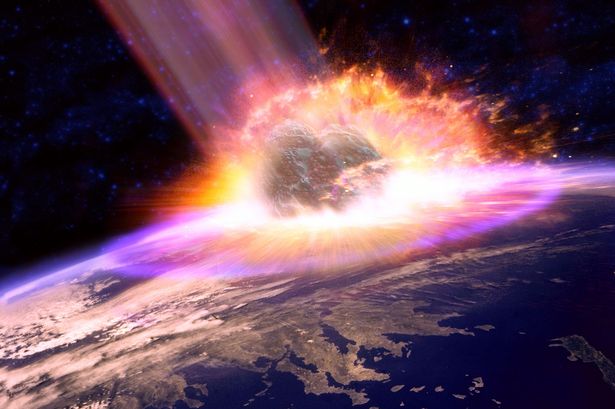
Earth was set on massive firestorm by humongous comet that led to Ice Age 12,000 years ago
The last time our Earth was covered with the white sheet of ice was between the periods of 110,000 to 11,700 years prior to the present day. This ice age was said to begin with the latter phase of the Eemian interglacial period to the last days of the “Younger Dryas”. However, the latest study conducted by researchers suggests that the ice age got extended as a massive comet struck down on Earth.
The northern hemisphere of the Earth was heating up normally with glaciers retreating and grasslands thriving and spreading. However, the sudden strike by this comet caused the temperature to drop down suddenly bringing back the ice age for another set of thousand years. The Younger Dryas period saw the extended ice age, however, the cause of comet strike inducing temperature drop hasn’t been understood totally. The researchers state that this comet strike sparked wild spread fire that drove varieties of animals into the face of extinction.
The study of this extended ice age has been jotted down in the “Journal of Geology” that states that a deep study of the ice and sediments backs up the fact that the comet impacted the temperature of the planet to a drastic extent causing the extension of the ice age that was all set to end. The researchers took samples of rocks and sediments from various locations spread out all over the world that pointed out to the fact that these sudden fires caused by the comet released a massive amount of smoke that covered the sky whilst blocking out the sun. This caused a significant drop in the overall temperature of the planet which resulted in an ‘Extended Ice Age’.
Not just science, ancient carvings also confirm the comet strike which was found in a site at Turkey that tells the tale of a mini ice-age. The carvings were found on a pillar named “Vulture Stone” which suggests numerous fragments of fire dropped down from the sky and hit the surface of the Earth. The carvings include the picture of a man without his head that was used by the early humans to symbolize the sizeable loss of life.
According to the scientists, the Younger Dryas era lasted for 1,200 years followed by an increase in temperature that leads to the growth of human civilization due to the presence of suitable climate. The researchers have speculated that these fragments from the comet could have exploded near the Laurentide Ice Sheet near the Great Lakes, however, an impact crater for the same hasn’t been found yet nor does any model exists that states that these swarm could have exploded in the mid-air. Several proposals suggest that the air bursts in comet fragments could have been similar to but larger in magnitude as the 1908 Tunguska event.
The study also suggests that more than 10 percent of the land area on Earth was consumed by fires which equals to ten Million square kilometers. All these regions were found with a high content of chemical signatures from nitrate, carbon dioxide, and ammonia. With the comet strike, many North America based ice age mammals were swiped away from the face of Earth which includes the Saber-toothed cats, mastodons, giant ground sloths, and woolly mammoths.
As per the research, the comet from which the fragments rained down on Earth would have been close to 62 miles in length with its remaining half still floating around in our solar system.


